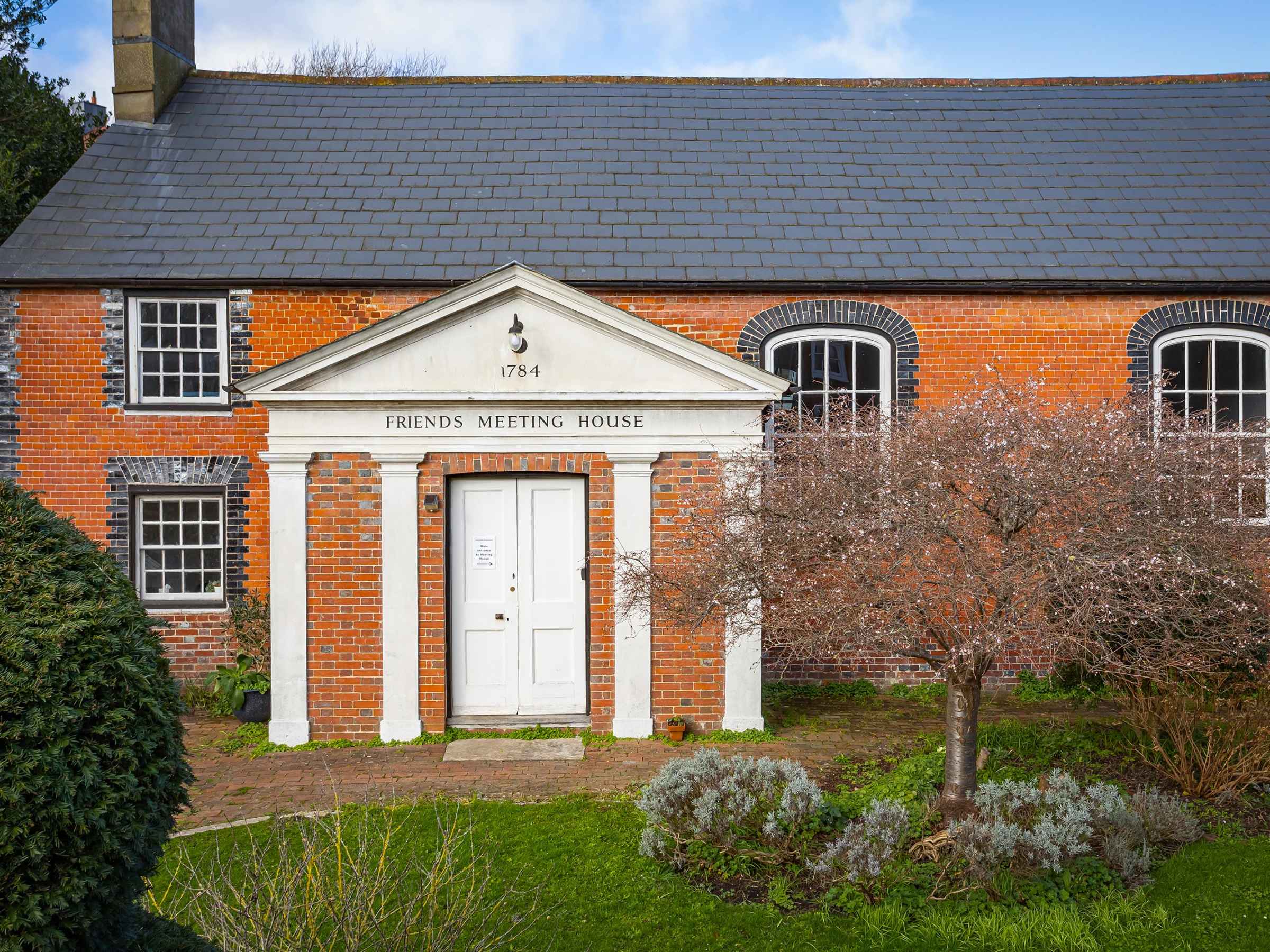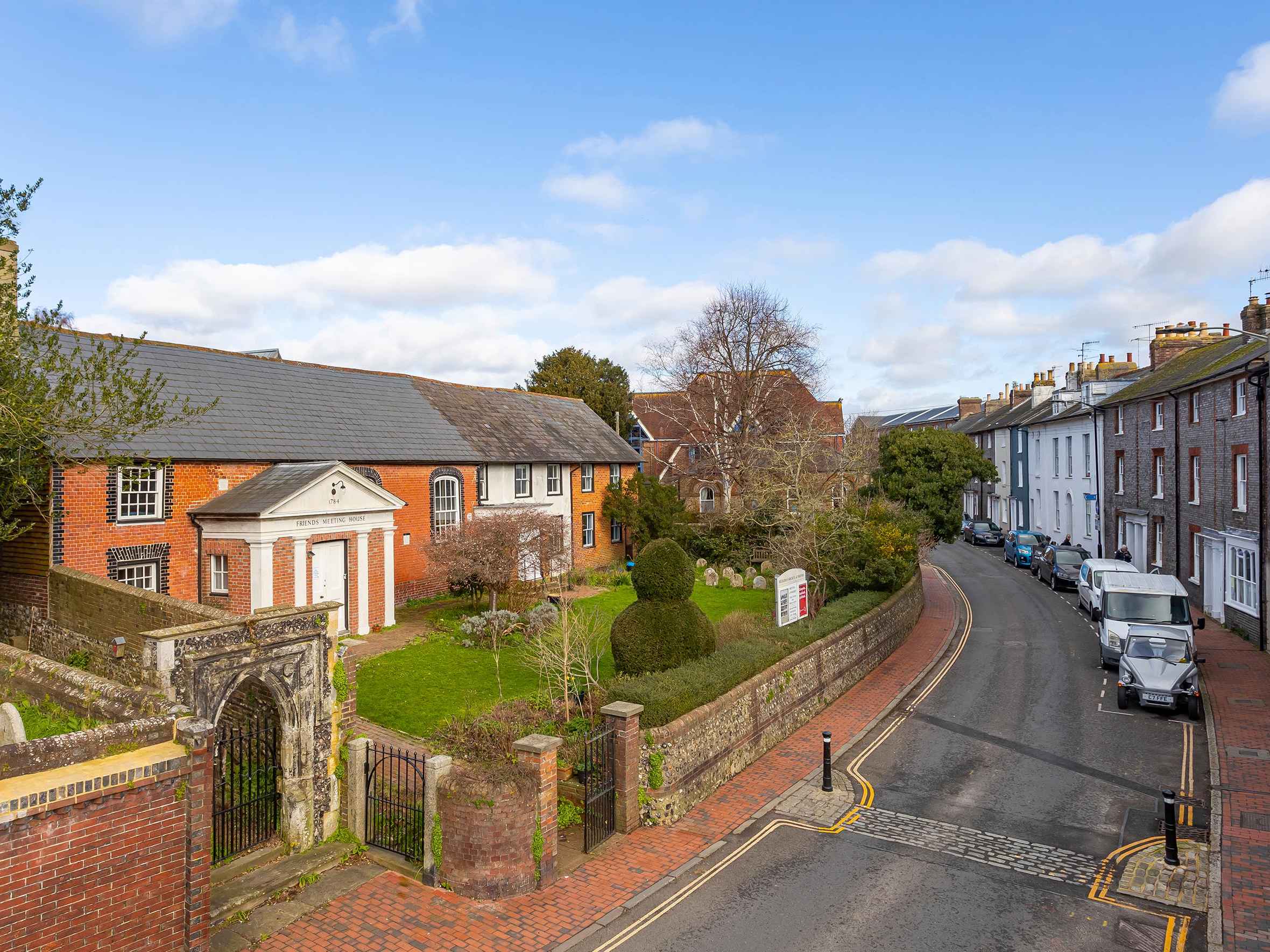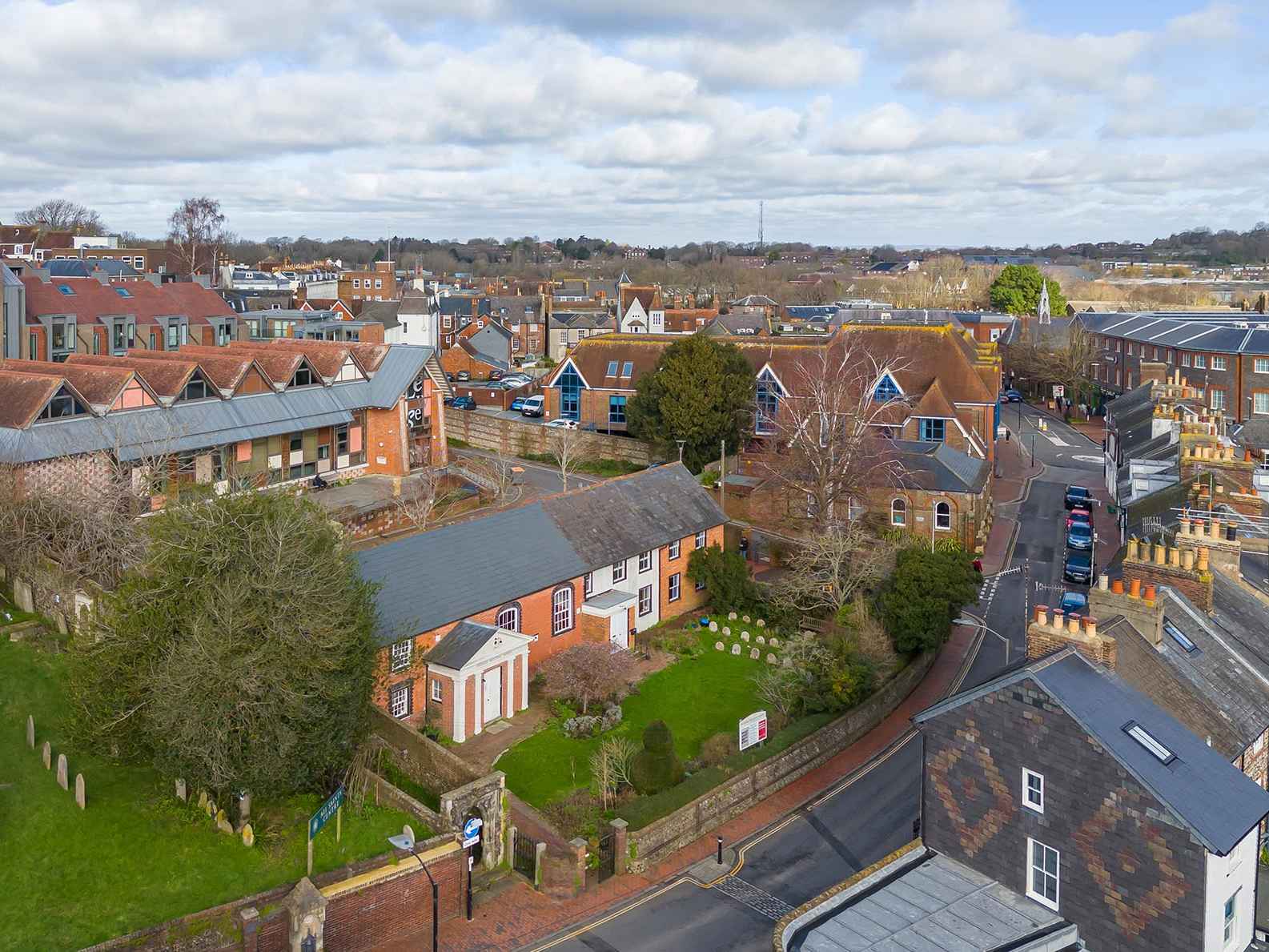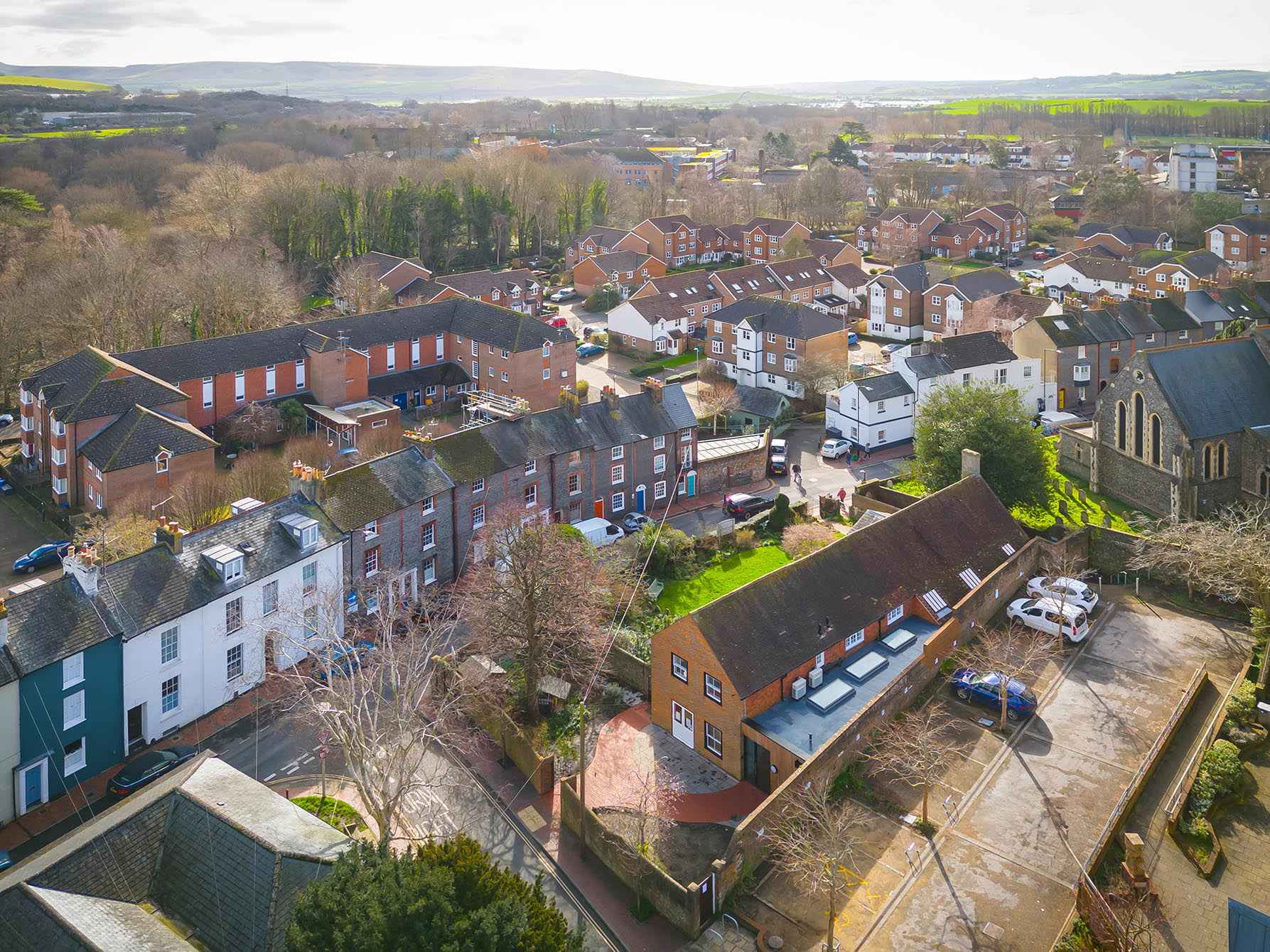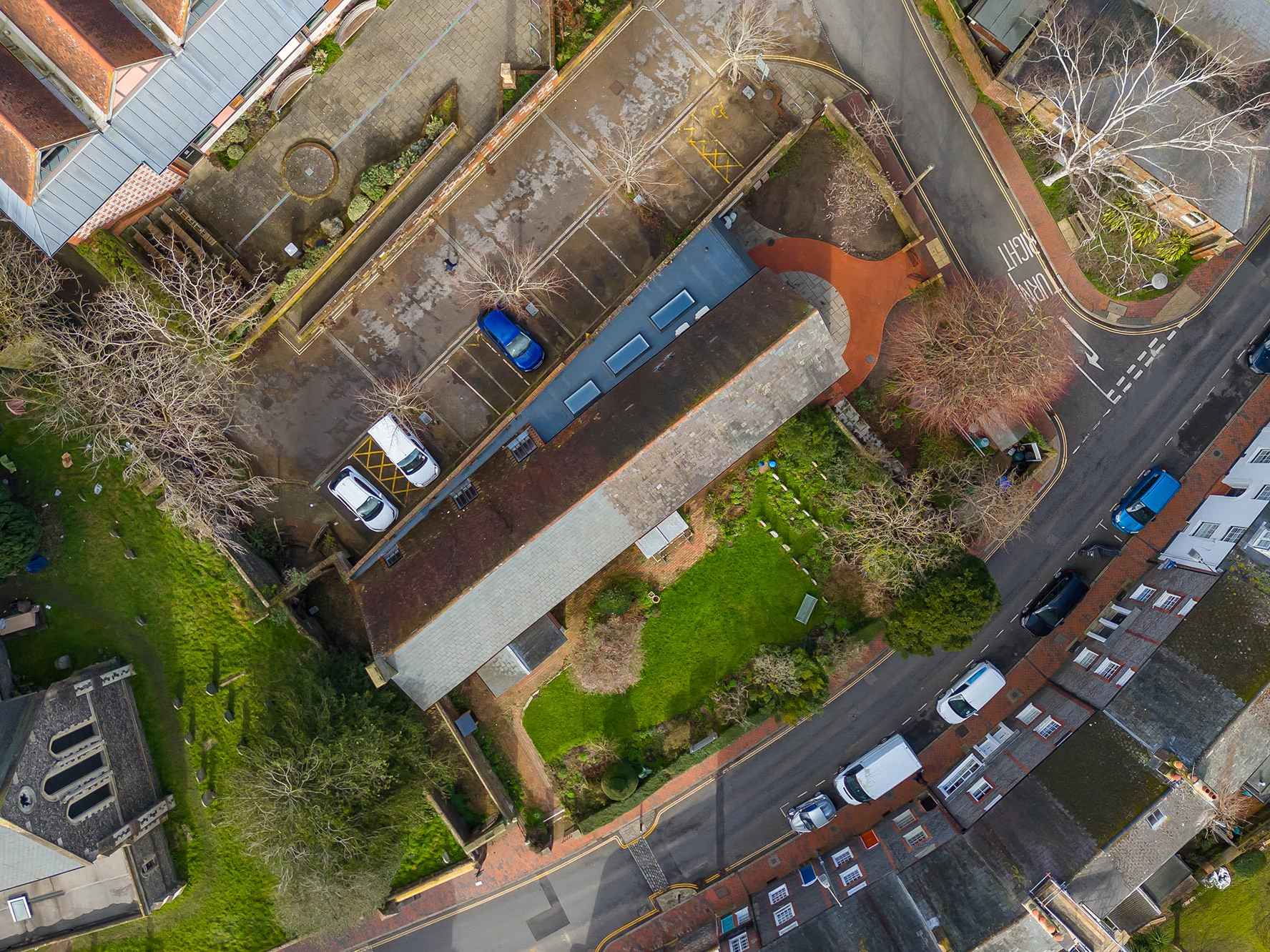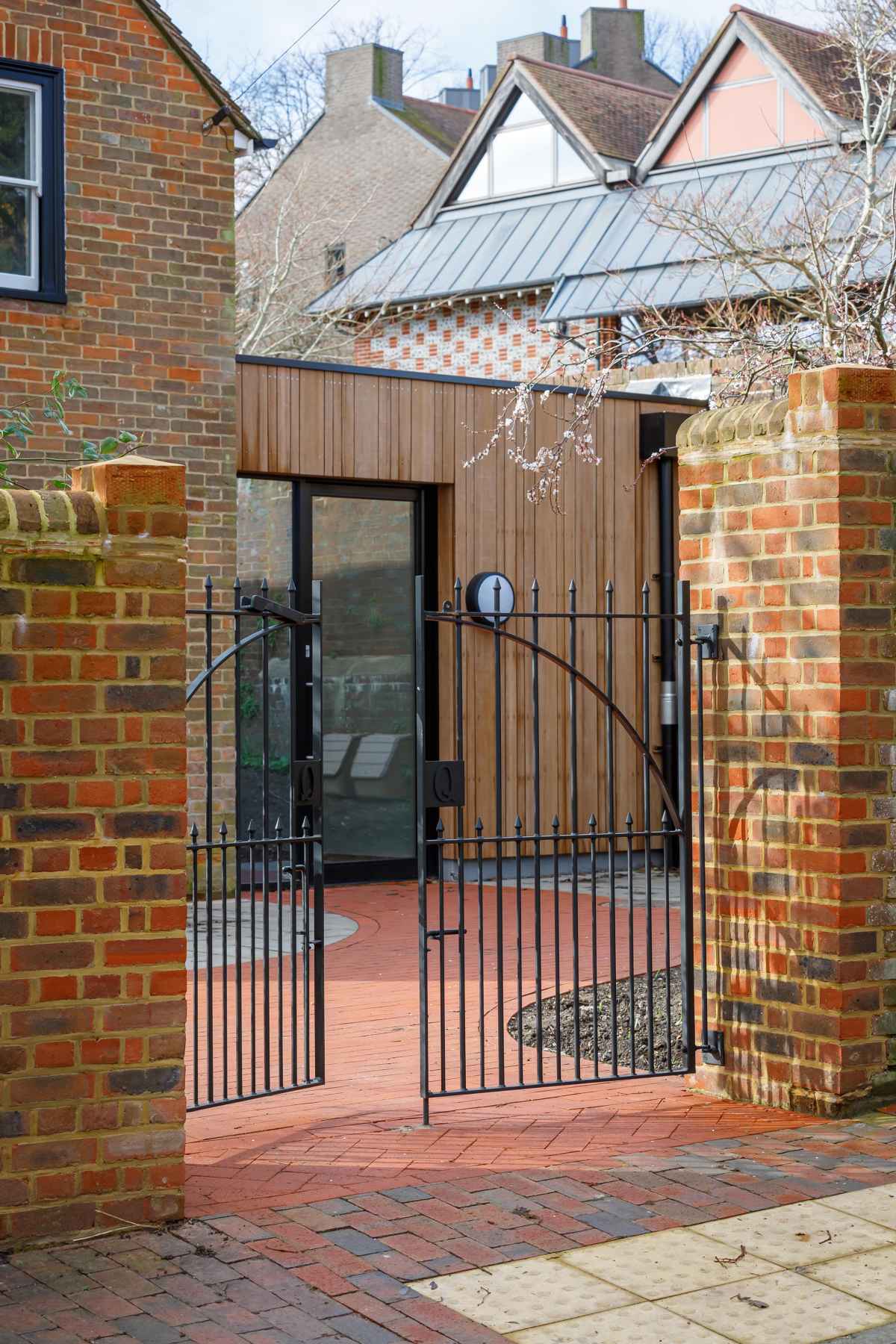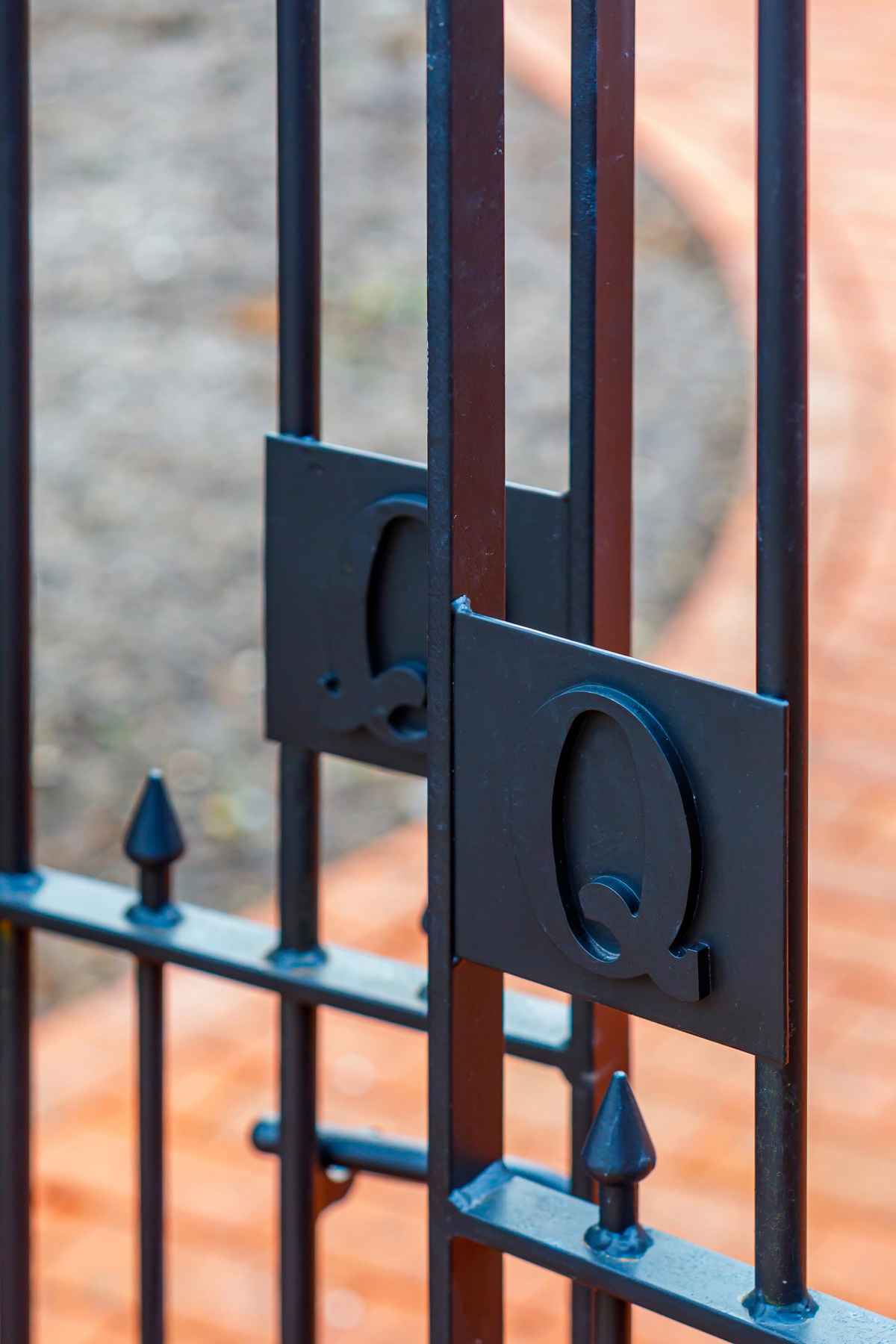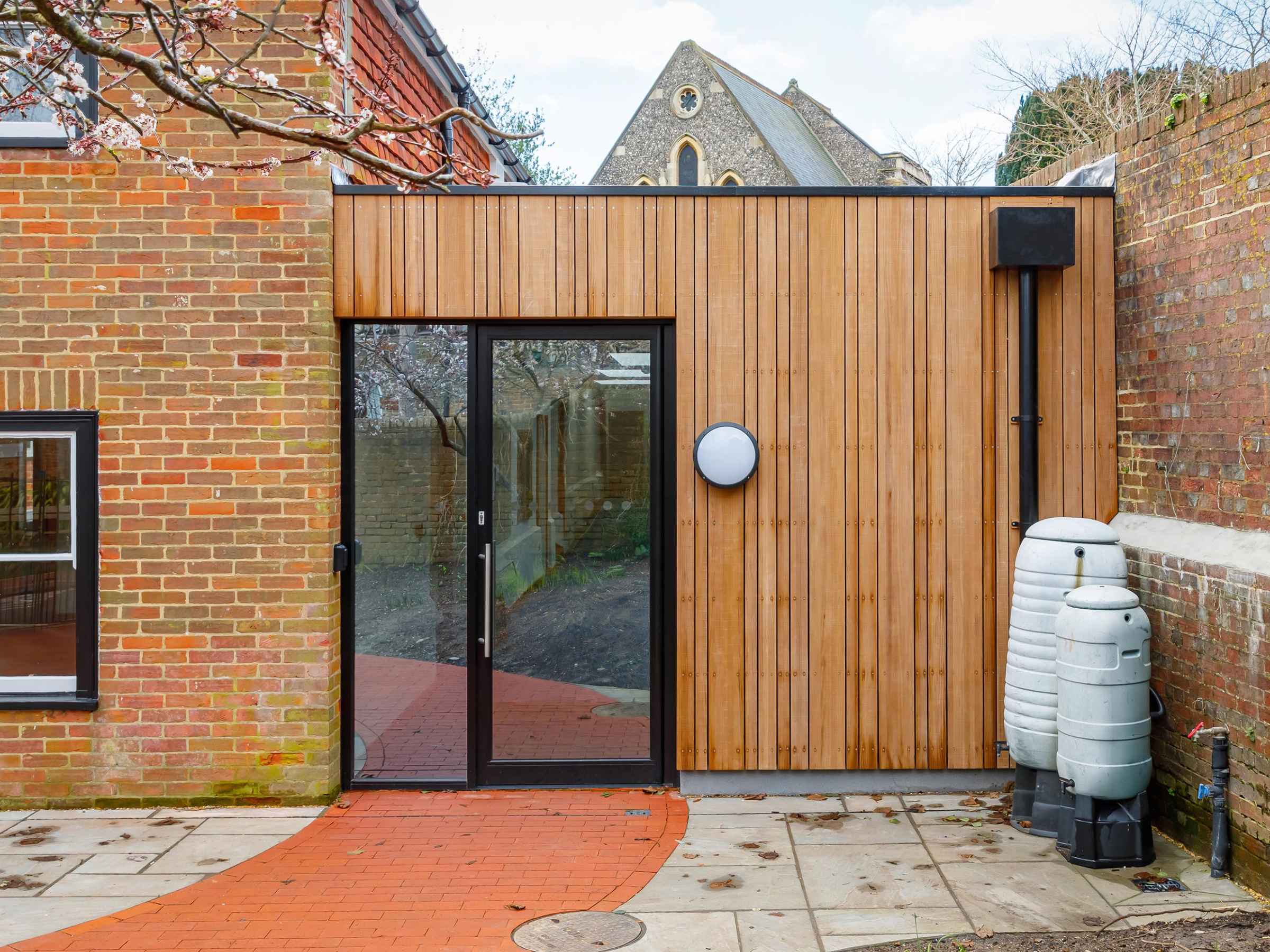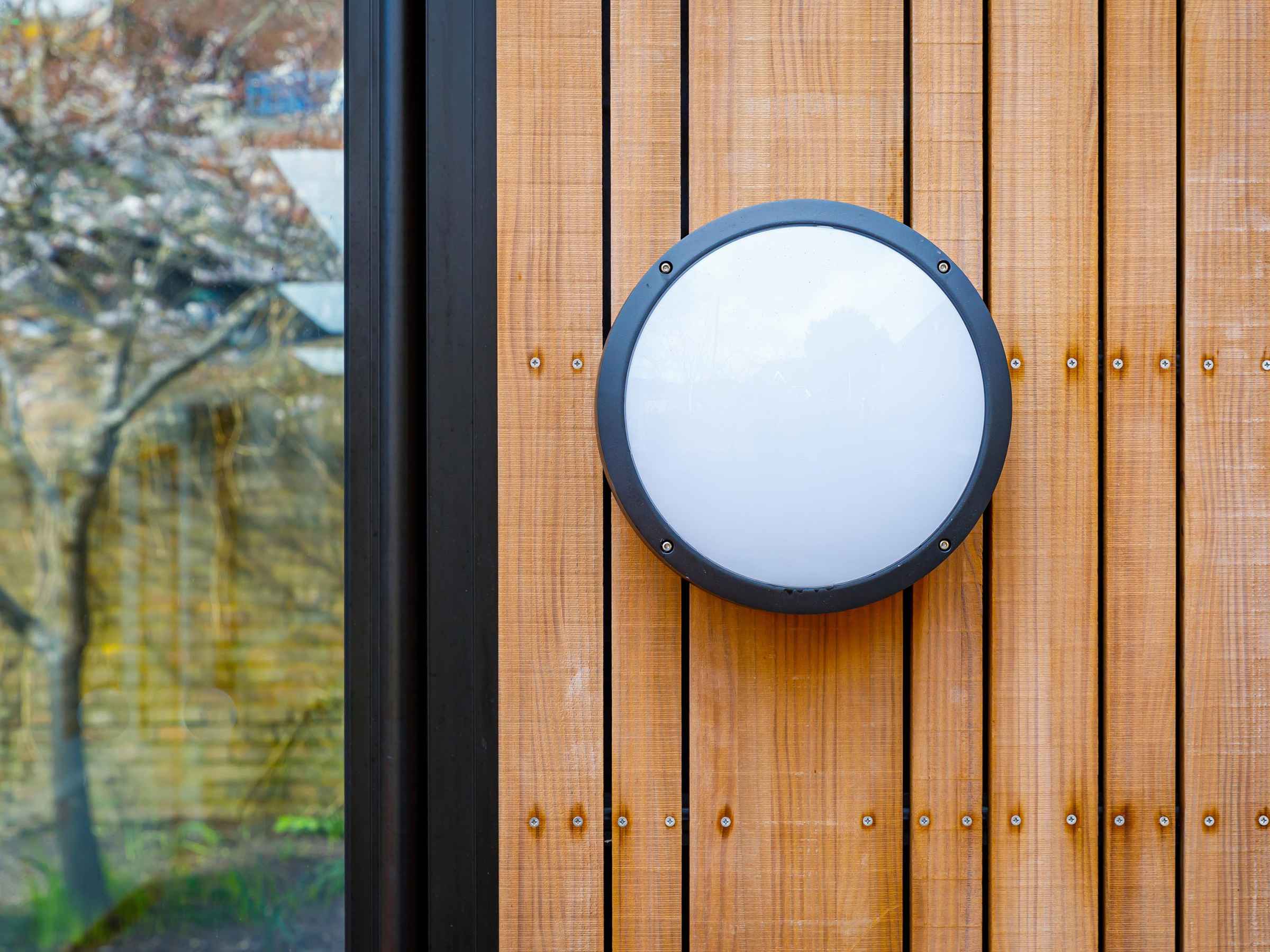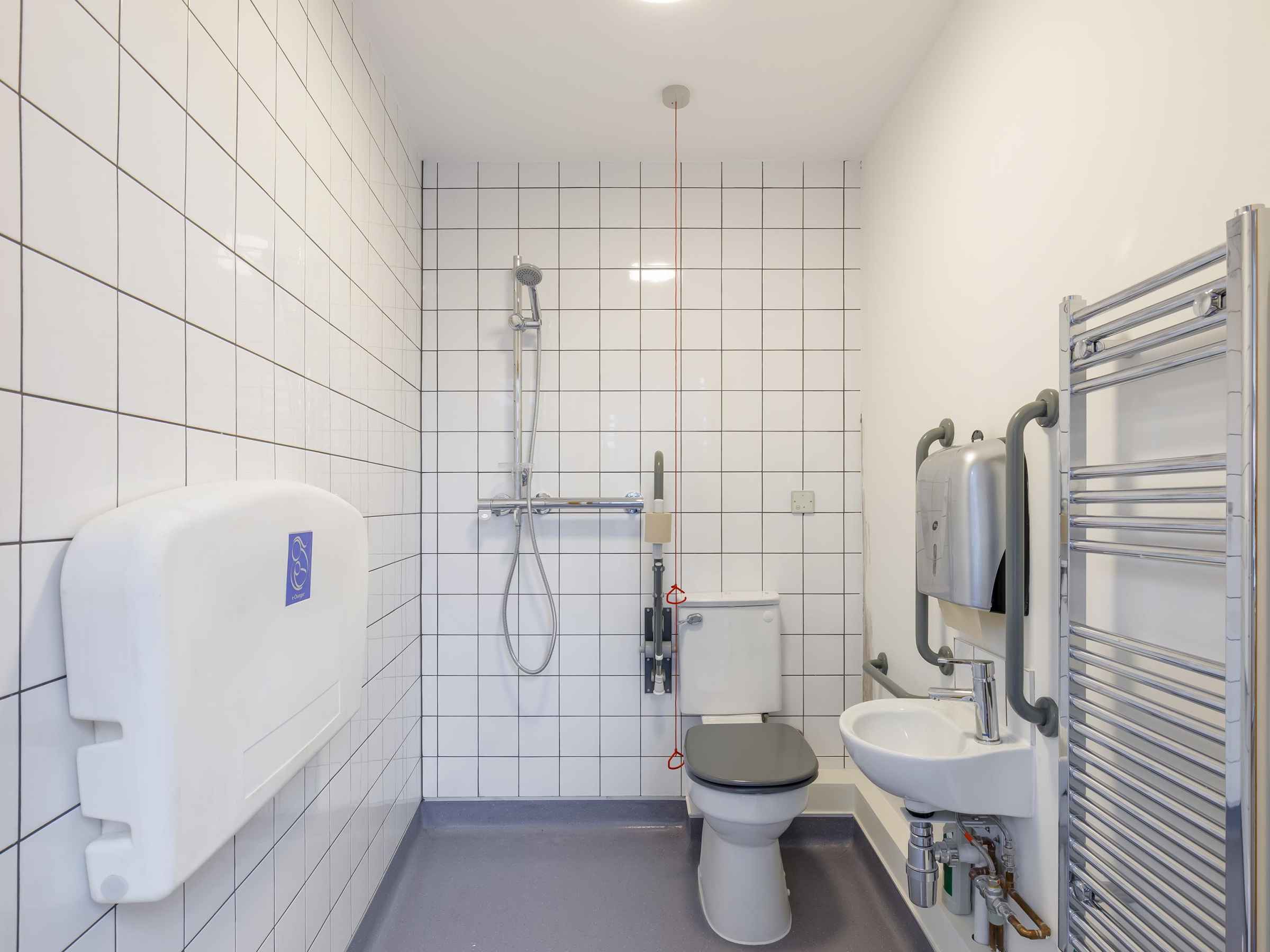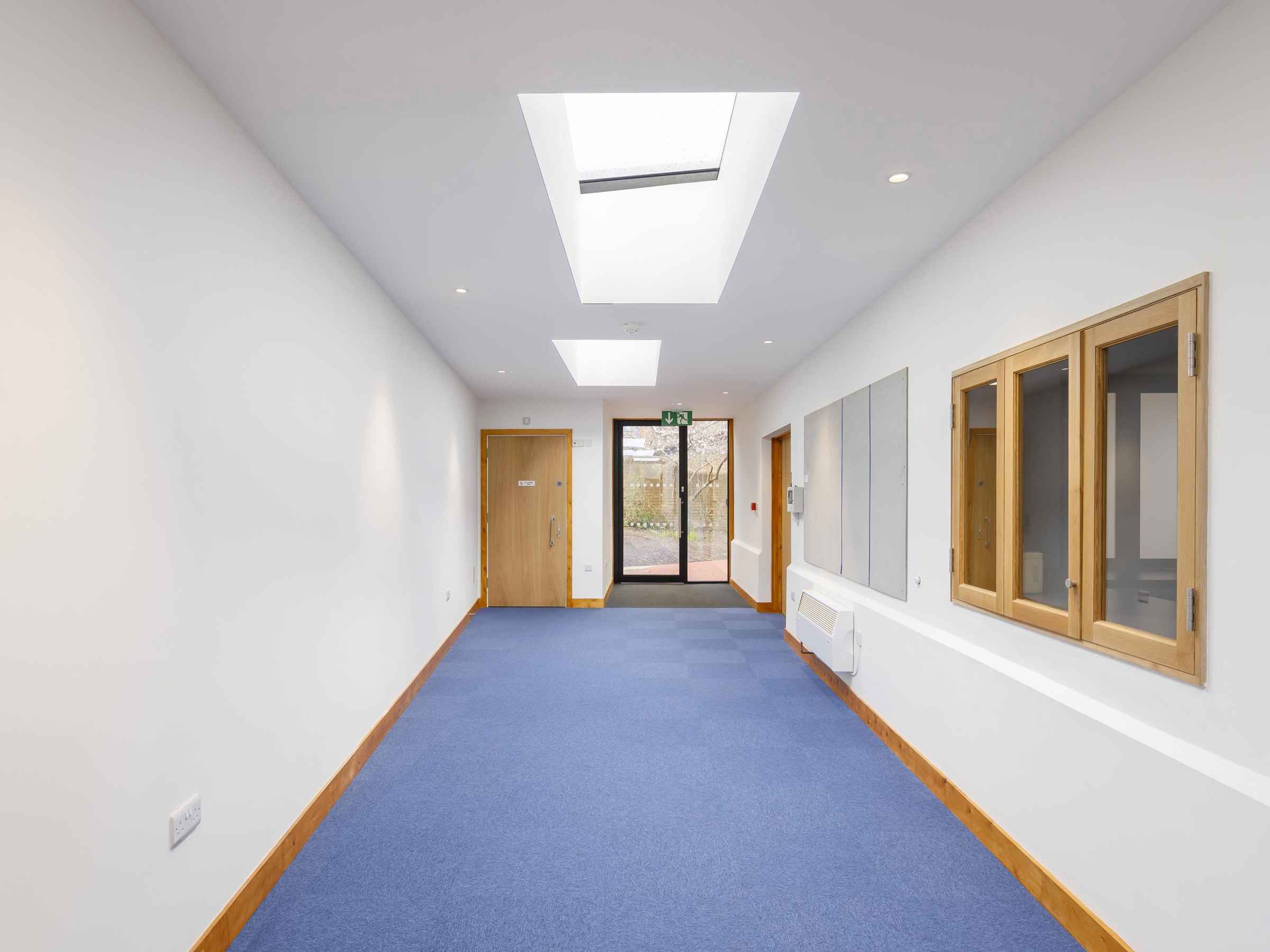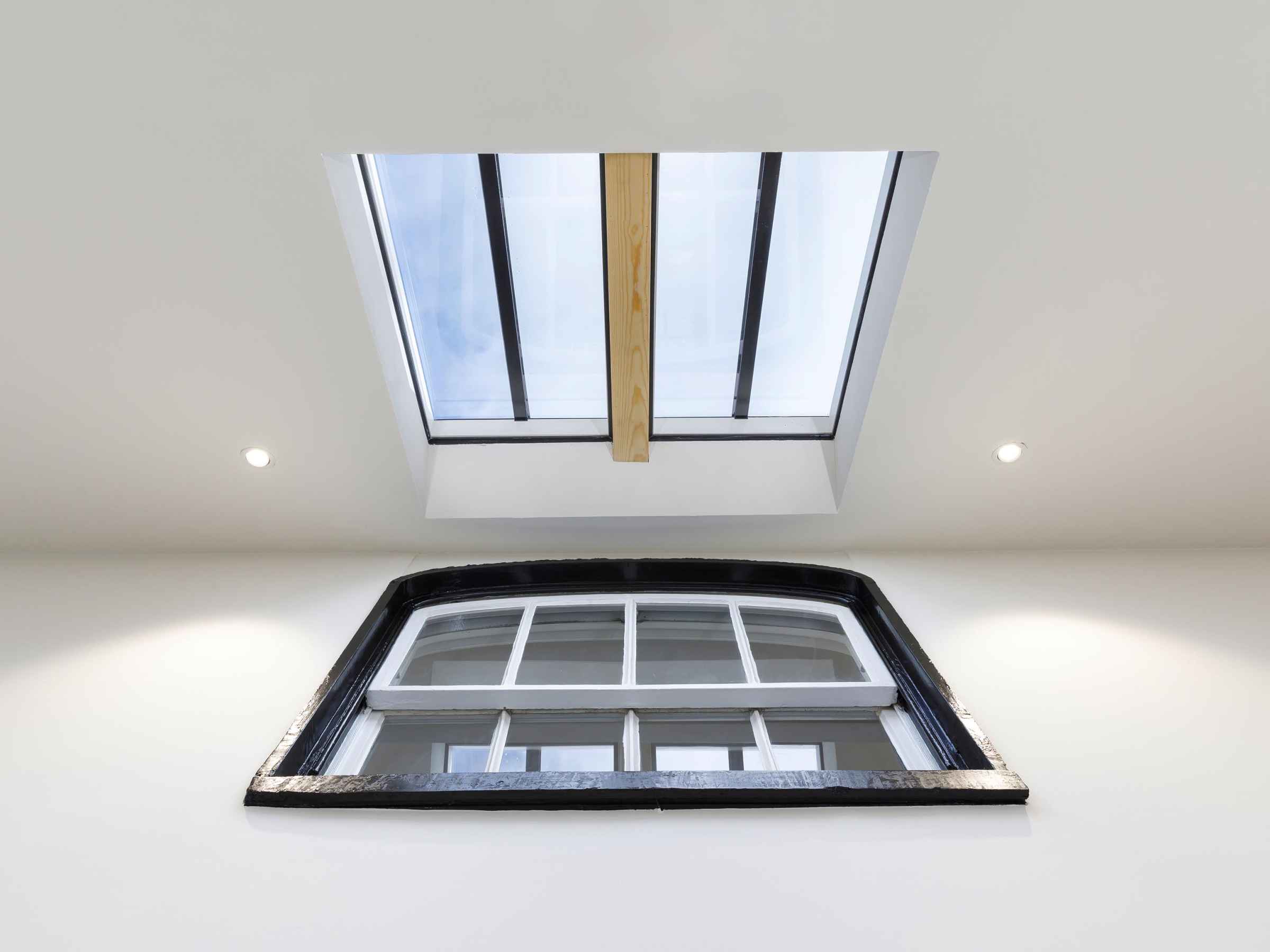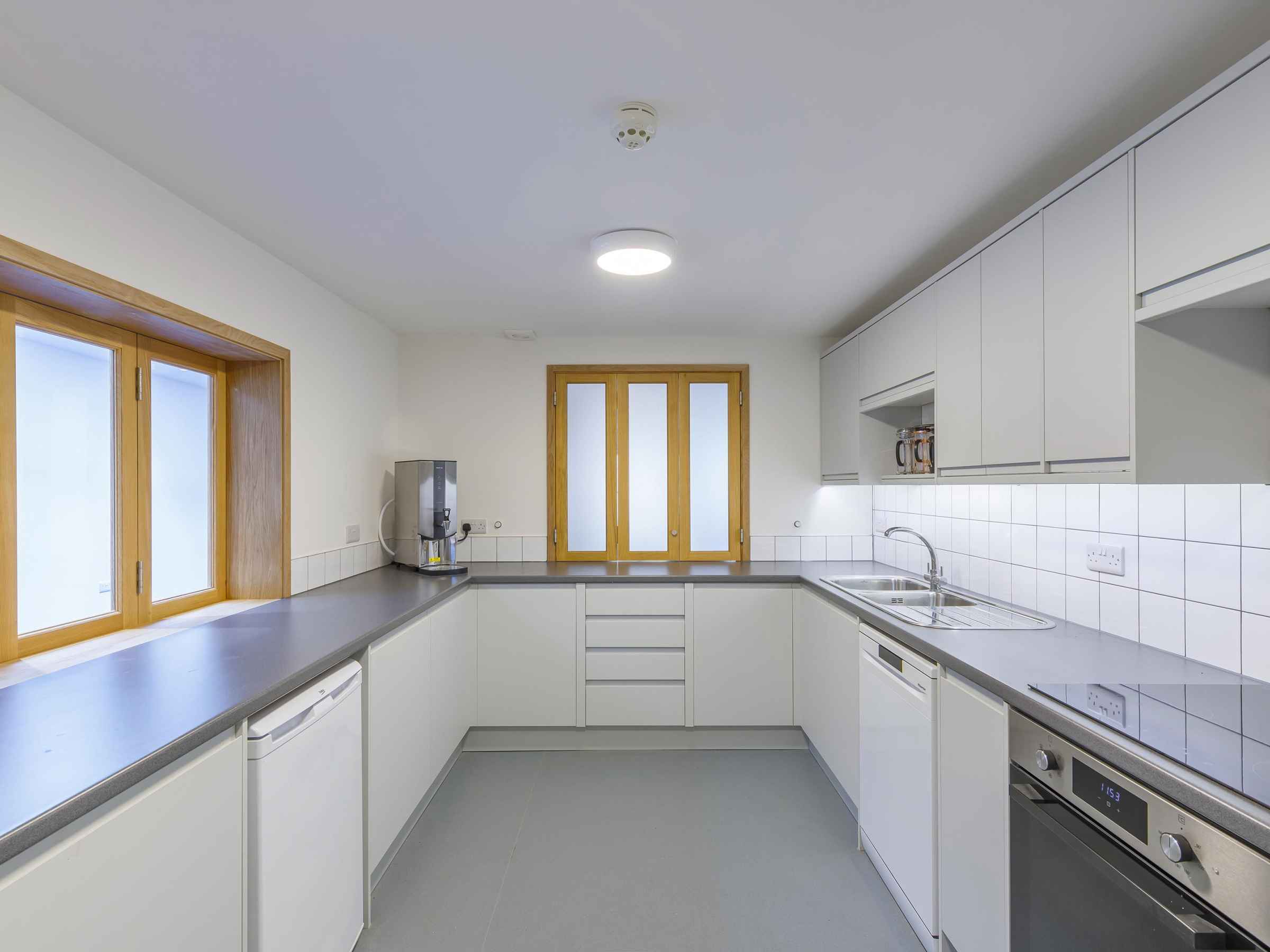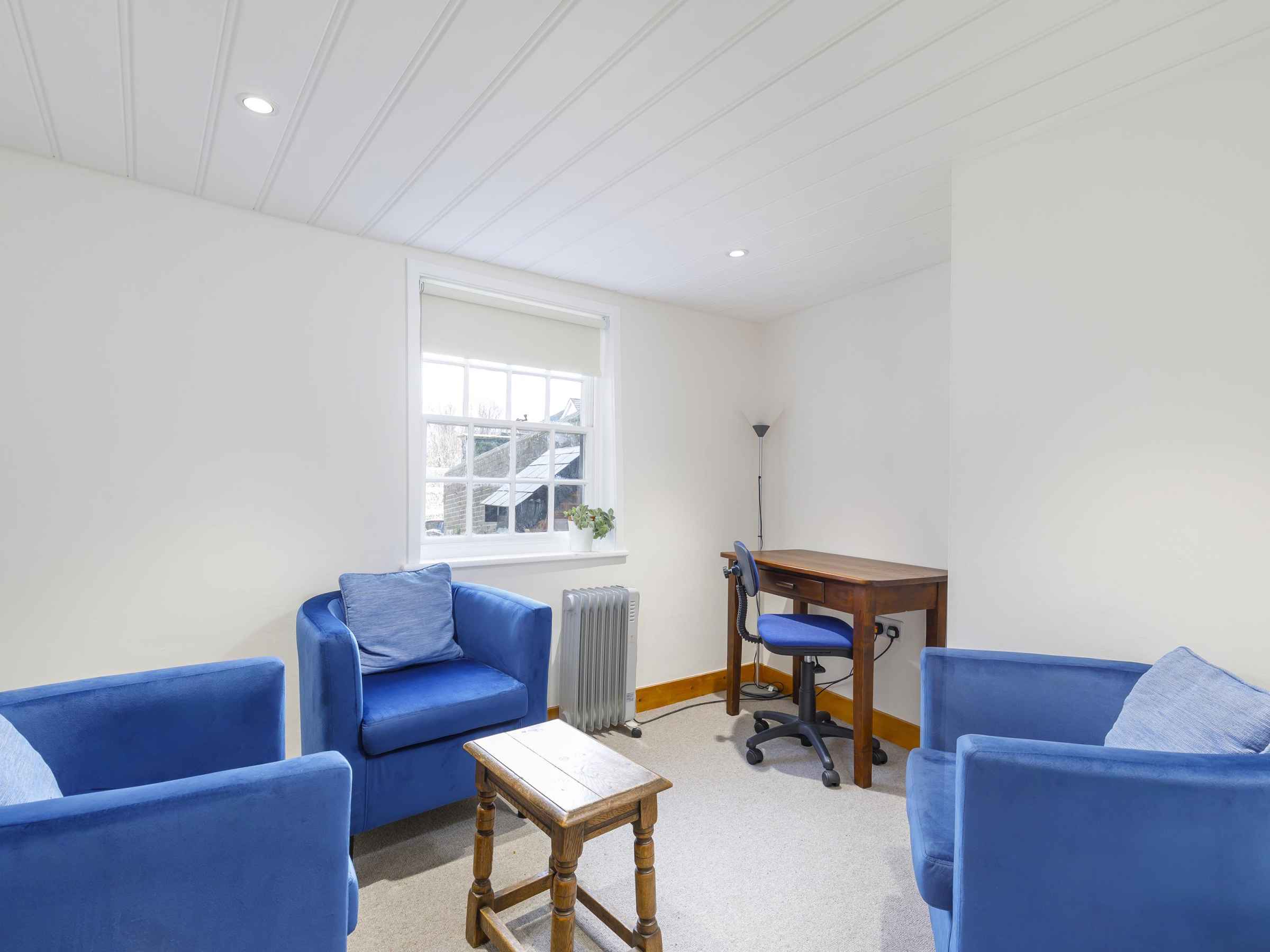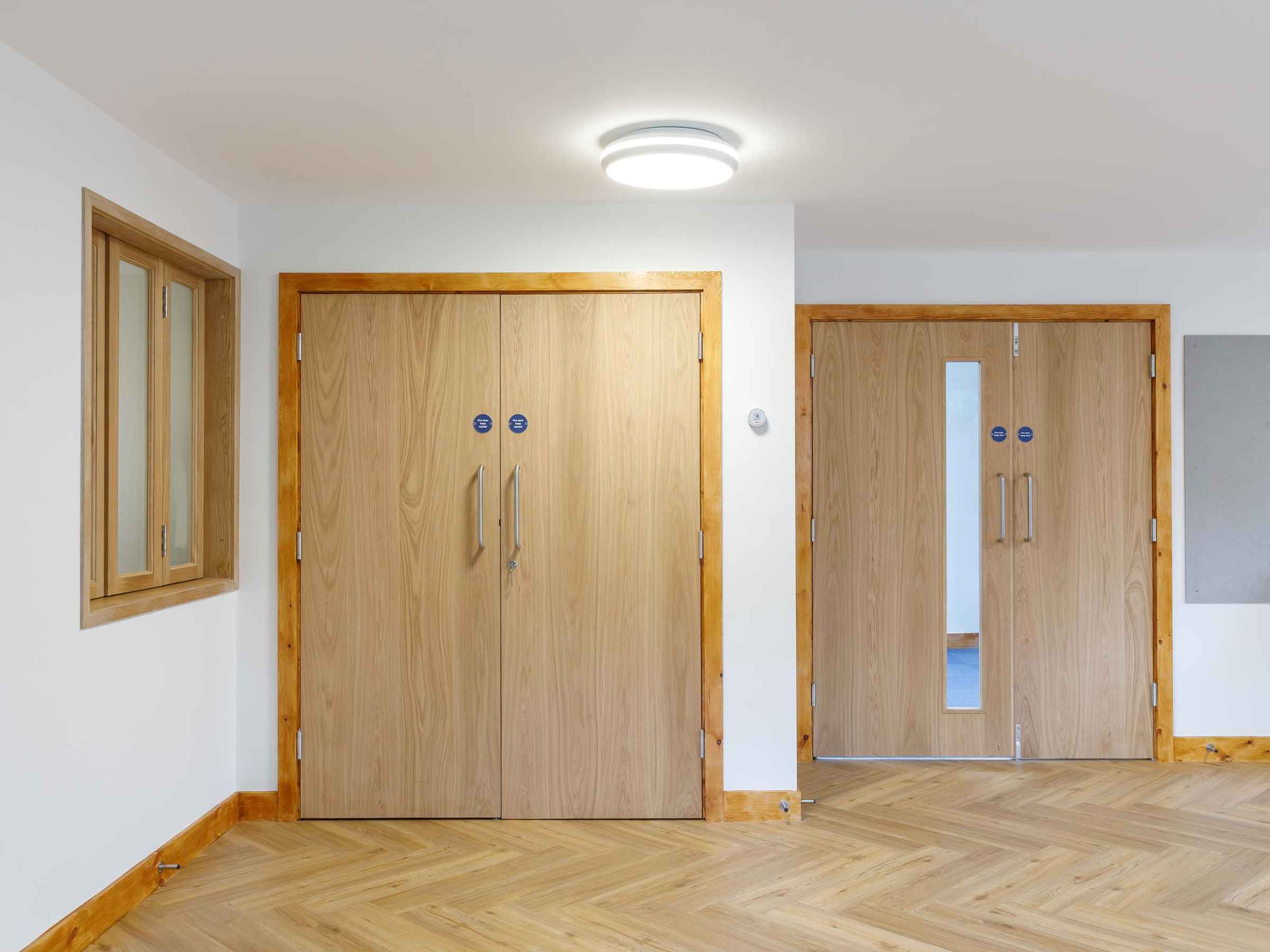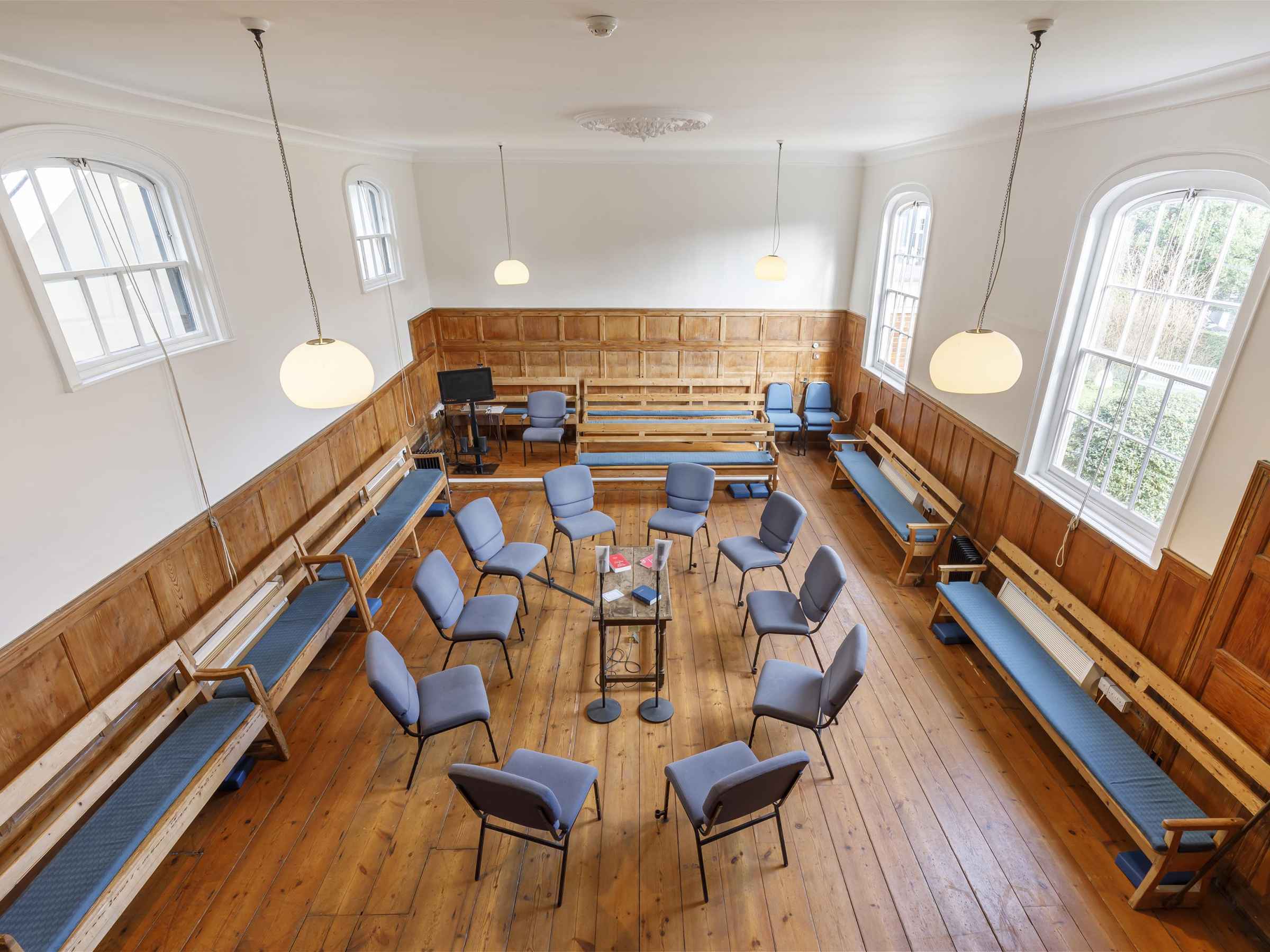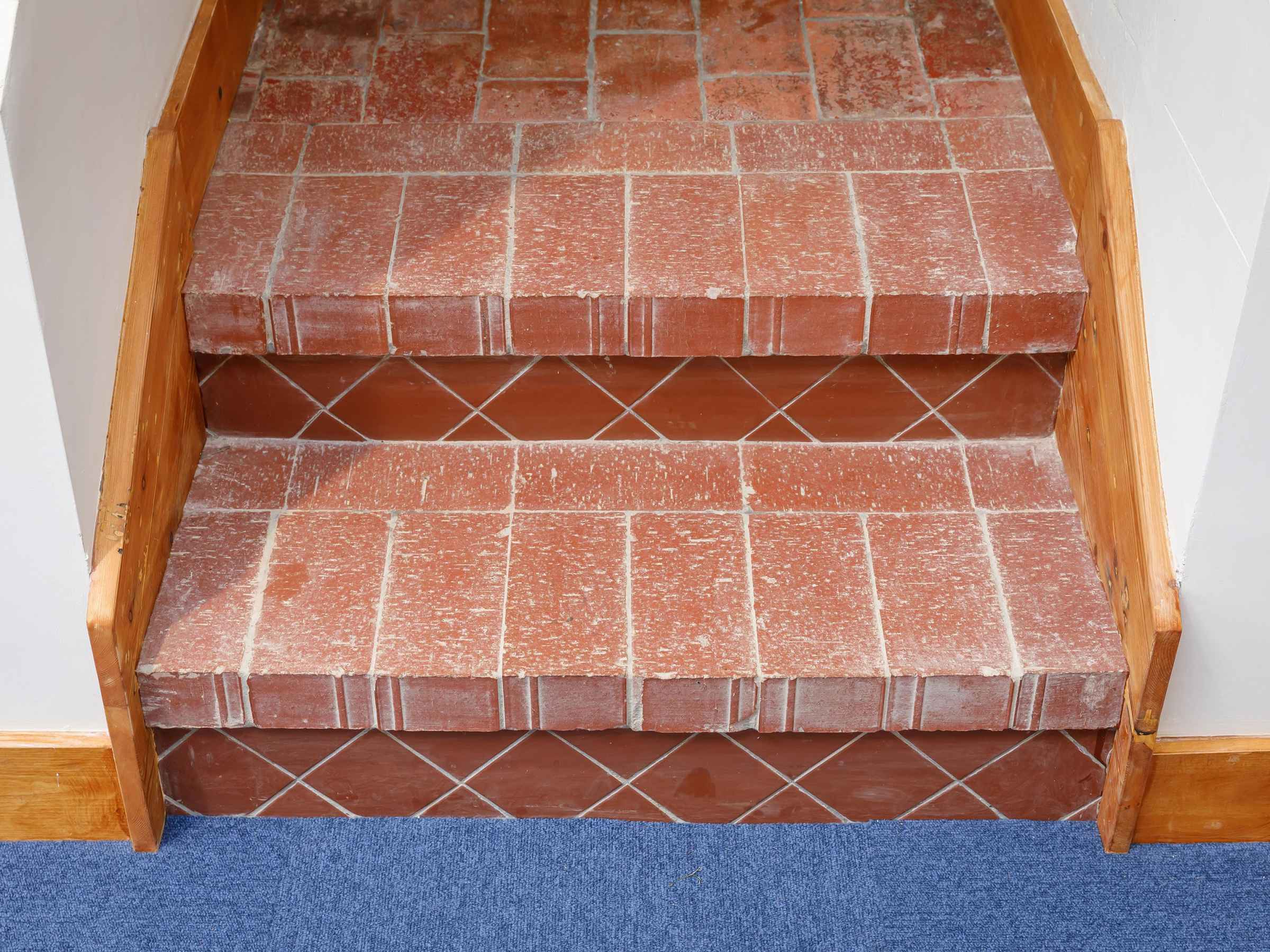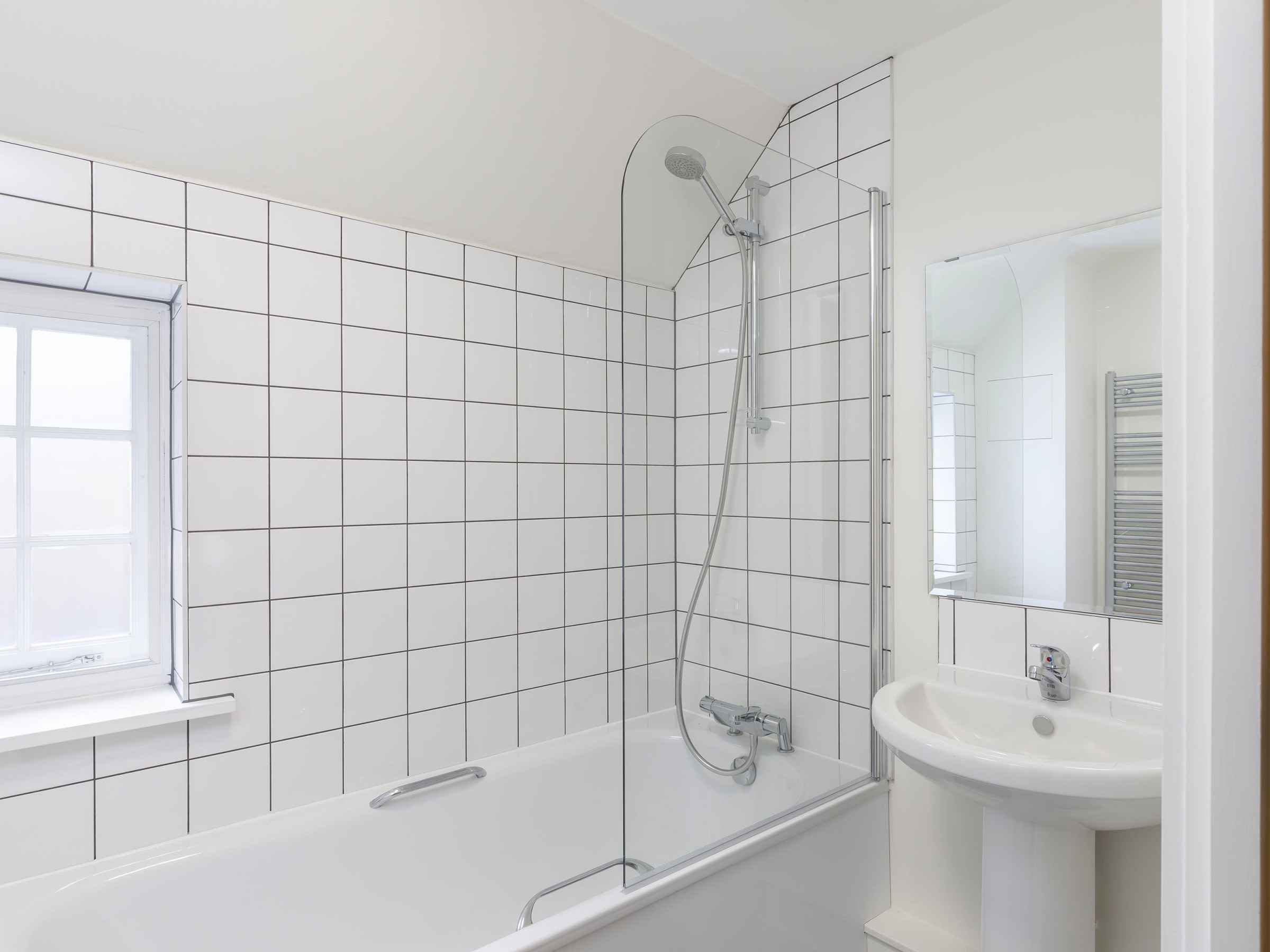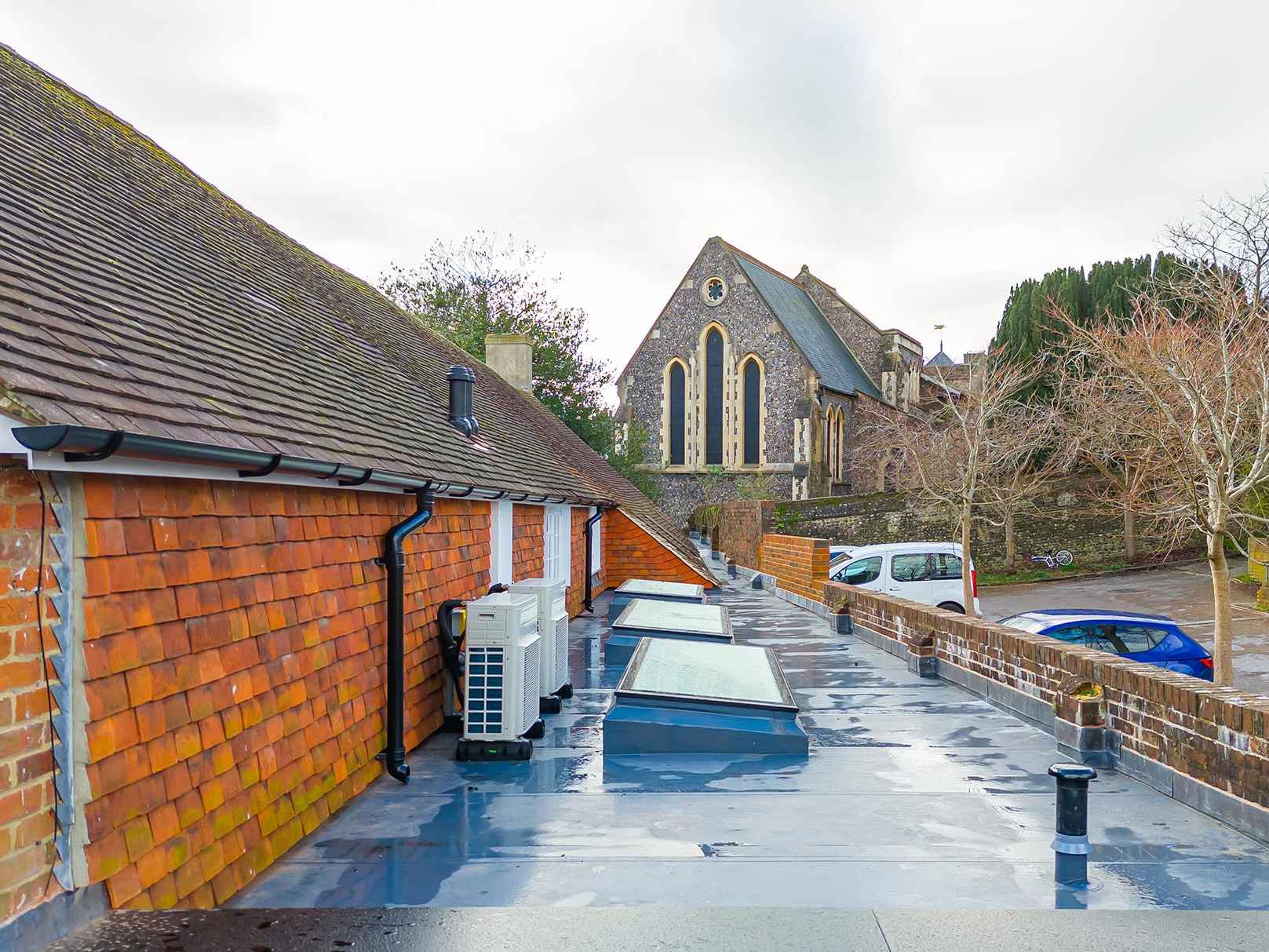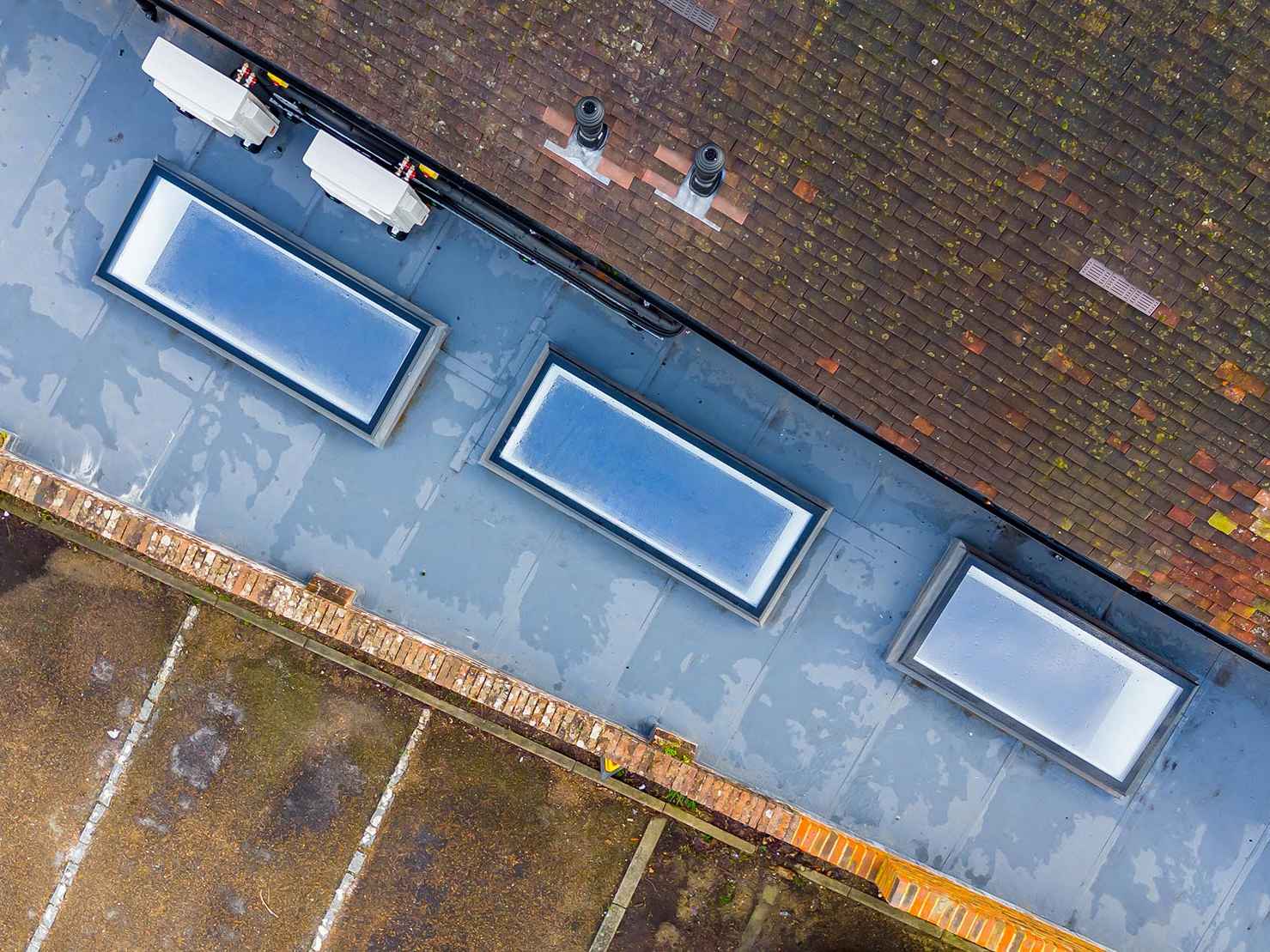Grade II Quaker meeting house restoration with accessibility improvements
Lewes, East Sussex
The Friends Meeting House in Lewes dates from 1774 and is one of the principal Quaker meeting houses in the country. Located in a Conservation Area, itself a heritage asset, this Grade II listed building was awarded various grants to enable the project to commence.
The building had been poorly maintained for some years and subjected to various unsympathetic 20th century alterations and sub-standard constructions.
Quakers are committed to becoming an inclusive, low-carbon community and this was reflected in the brief, which also required a flexible building to ensure future financial stability. The conservation development is ingenious.
With the creation of a new gateway in the listed boundary wall, it not only conserves the asset in the Conservation Area setting, but it also enhances the visibility of the building, as well as facilitating a level path from an existing dropped kerb – a solution offered from a simple site analysis on sight lines.
The flat roof rear extensions were rebuilt to provide a large foyer space, and used the rear retaining wall as the backdrop to snuggle into. This effectively insulated the entire northern wall to improve heat retention. A breathable drylining system was used for this section of work.
The modern entrance elevation is distinct from the original building, yet humble to reflect Quaker values.
This small external change has made a huge impact by unifying the internal layout and making the building feel much larger than before. The new interior floor space is flooded with natural daylight and leads to an internal ramp, which rises seamlessly to the Georgian Meeting room, new WC’s and consulting room. Look up and the building reveals two original Meeting House windows, which were previously hidden from view.
Access into the Meeting room has been returned to its original orientation, with a new double-door set into the original 18th Century panelled wall. This reflects previous changes made as the building has been adapted over the years.
Damp has been dealt with by removing damaging cement render, and pulling the earth away from the building with retaining walls or perimeter French drains. Walls have been drylined with lime plaster and wood fibre based breathable products, with limecrete used for new solid floors.
The new energy efficient heating system is a hybrid of heat pumps and gas to allow a gradual transition to full electric as the grid's carbon efficiency improves, whilst remaining affordable. An intelligent, programmable, zoned system is remotely accessed for complete control.
Finally, the resident’s flat has been completely retrofitted and fitted with thick acoustic and thermal insulation, lime plastering, secondary glazing, and its own air source heat pump. The stepped central 1970s porch can now be used as its own private entrance.
The brief for flexibility and future financial stability has also resulted in four separately rentable rooms.
